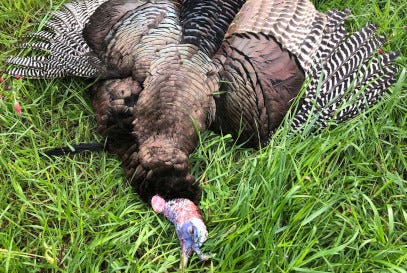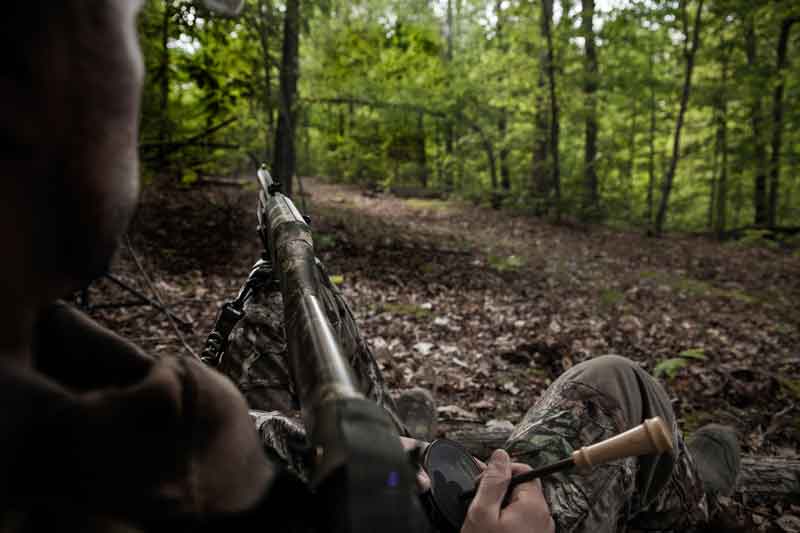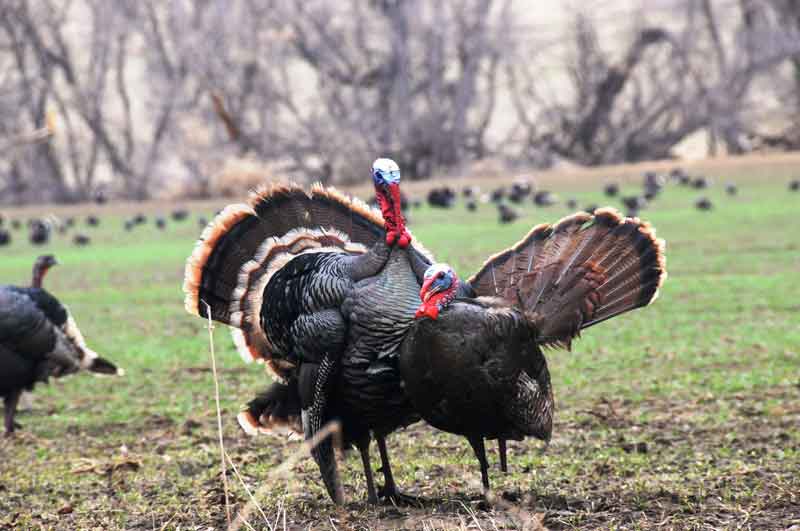- Sep 10, 2014
Listen to a Deer-Calling Legend
When you’re hunting a trophy buck, all bets are off. Trophy bucks have reached their large sizes because they’re smart and not easily tricked. The odds are definitely in the big guys’ favor, but there are a few things you can do to, at the very least, swing the pendulum more in your direction.
Deer-hunting legend and co-founder of Knight & Hale Game Calls Harold Knight says the ability to call deer gives you a bit more control over a sport for which so much is out of your control. He also likes that calling adds some action to the sitting and waiting game.
Knight explains that calling in trophy bucks not only requires simple calling skills, but an understanding of your hunting environment and seasonal phases. Below, Knight gives a few tips for making the most out of your deer-calling experiences this year.
Know when to call: When it comes to calling bucks, especially big ones, timing is everything. You can have the best calls and the most refined calling skills, but if you call at a time when the bucks are not interested, you’re going to be disappointed with the results.
Knight says one of the best times to grunt or rattle is right before the peak of the rut when does are in full estrous.
“Of course, that ideal time to call will vary throughout different parts of the country,” Knight said. “Where I live in Kentucky, the best time to both rattle and grunt is during the first of November. If you try calling before then, you won’t get much response. The same goes if you try calling during the peak of the rut. There is so much grunting and rattling going on by the actual deer themselves during that time of the season, that it’s hard to get their attention with your own calls.”
If you’re dead set on calling during the early season, Knight recommends using a fawn in distress call. “Does will respond to the call of a fawn in distress, even when it’s not their own fawn making the calls. And often, when the does come in, the bucks will be following not too far behind.”
Timing of your calls also depends on your purpose for calling. There are basically two different reasons for using calls. The first is to locate and attract deer to within shooting range. The second reason is to stop a deer in its tracks, so you can get off a shot. When trying to attract deer to your stand or hunting location, you can make a series of calls using different calling tools. When you’re trying to get a deer to stop, you can make one simple forceful grunt to cause him to stop long enough to get off a shot.
Know how to call: One of Knight’s most favorite calling techniques is rattling. “I have better luck rattling from the ground than from the stand,” Knight said. “Although, sometimes you must rattle from the stand so you’ll be in the right position to make a good shot when the time comes. I like to use the K&H Da’ Bonehead Deer Rattling Call while stomping my foot and beating the brush around me to truly add some realism to the calling scenario. I will also often add a grunt call to the mix. I’ll grunt and then rattle and then grunt again. Combining the two calls comes across as more realistic.”
Know how much to call: One of the biggest mistakes hunters make when trying to call a big buck into their setup is simply calling too much. Calling too frequently is easy to do. When you get tired of sitting and waiting for that big buck to appear, you want to do something to speed up the process. But, if you call too often, you won’t sound realistic and you’re more likely to frighten the deer away rather than attract them.
“I’ll usually climb up in my stand, get situated and sit still for 30 minutes or so without calling,” Knight said. “Then I’ll make one or two grunts and will wait 15 minutes before I grunt again. Then, if I don’t see anything, I’ll grunt once again. Essentially, I’ll give two or three series of grunts lasting about 10 seconds each. Then, I’ll wait 30 minutes without making a sound before I repeat the series.”
Know when to stop calling: If you’ve successfully called in a buck, and he’s walking toward you, stop calling, no matter how far off he is. You don’t want to risk alerting him to your exact location. Instead, put your call down and start preparing for the shot. Study where you are in relation to the deer. Pay attention to how quickly the deer is moving toward you and decide at what point you’re going to make the shot. If he gets distracted and begins walking off, then you can make another grunt call to get his attention.
Know how loudly to call: When calling bucks, take note of the weather and the acoustics in the area where you’re hunting.
“When the wind is blowing hard, you’re gonna have to rattle and grunt much louder in order for deer to hear your calls from a distance,” Knight said. “On calm, quiet days, you need to make softer, quieter calls in order to sound more realistic.”



